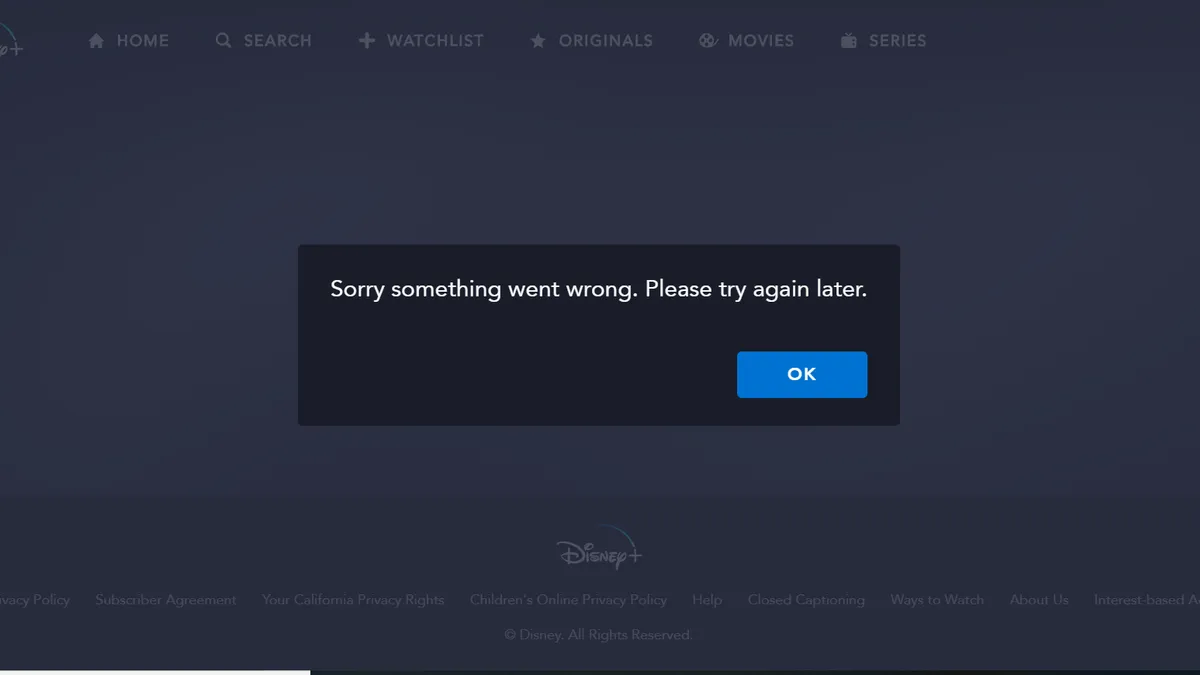Dive Brief:
- Disney+ launched Tuesday morning and subscribers were greeted with error messages and unable to connect to the platform. Service outages are a lesson in capacity planning for cloud-based platforms on launch day. Disney did not immediately respond to request for comment.
- By about 7 a.m. EST, Disney+ users took to social media to complain about access issues. Before 8 a.m., there were nearly 7,000 reported problems on Downdetector. Issues spiked to more than 8,000 problems before 10 a.m.
- "We are so pleased you're excited to watch all your favorites and are working quickly to resolve any current issues. We appreciate your patience," the company posted on Twitter at 10:43 a.m. EST.
Dive Insight:
Disney+ was so hotly anticipated it crashed under pressure. While its popularity bodes well for Disney's place in the streaming market, customers are unimpressed.
The #DisneyPlusFail began circulating on Twitter.
Honestly not surprised about the #DisneyPlusfail. Even the best servers in the world can't prepare for millions of Americans trying to stream Hannah Montana at once.
— Sarah Elizabeth Parker (@ashayamsarah) November 12, 2019
As a streaming service, if customers can't access content, there is no business. Disney+ has some lessons to learn in chaos engineering.
Netflix, now a direct competitor of Disney, is known for cultivating a resilient in-house structure. The company is known for conducting self-inflicted application distributed denial of service exercises.

Netflix is a longtime Amazon Web Services customer. While it's unknown who is the primary cloud provider of Disney+, The Walt Disney Studios and Microsoft announced they were partnering to distribute cloud-native content on Azure in September.
As part of the five-year deal, Disney will leverage Microsoft's technology for cloud-based offerings "from scene to screen" and advance physical production with large media files.
The cloud is a, if not the, primary technology for enabling streaming services.
But during a service outage, a cloud vendor's role is minimal. As long as the cloud vendor's service is up and operational, "it's the responsibility of the customer to ensure the proper configuration and mechanisms are in place so that services scale appropriately," Gremlin CTO and Co-Founder Matthew Fornaciari, told CIO Dive in an email.













